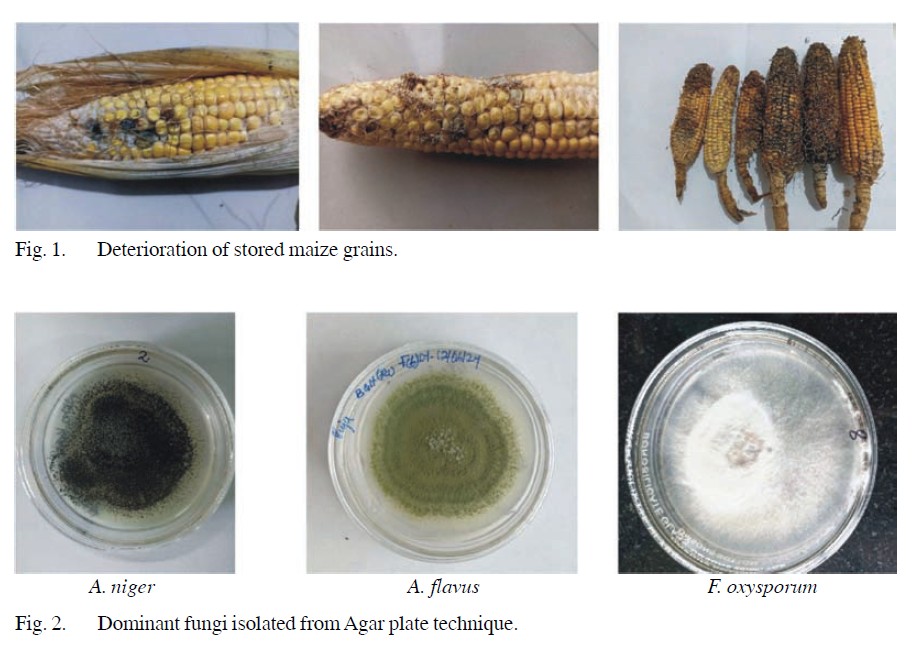Fungal Deterioration of Maize Grains in Bilaspur (Chhattisgarh), District in India
Main Article Content
Abstract
Maize (Zea mays L.)is a critical cereal crop in Chhattisgarh, contributing significantly to the agricultural economy. However, the region's hot and humid climate, combined with inadequate storage facilities, often leads to the rapid fungal deterioration of maize grains in a very short time. Deterioration of maize is mainly affected by moisture content, temperature, humidity, storage conditions, fungal growth, and insect pests. Fungal growth, mostly Aspergillus flavus, Aspergillus niger and Fusarium sp. in maize is facilitated by hot and humid conditions, posing a risk through mycotoxins production. To maintain high-quality maize for short and long term-storage, maize must be protected from weather, and the growth of microorganisms and pests. So far, the present investigation of fungal deterioration has been done. Random maize seed samples were collected from various places in Bilaspur (District) viz. Masturi, Kota, Ratanpur, Sipat, Sakri, and Bilaspur. The collected samples were stored individually in pre-sterile polyethene bags at room temperature until use. Five random maize samples were collected from each tahsil. Moisture, pH, Biochemical and mycological analysis were done. Moisture and pH of each sample were studied. Mycological analysis through the Agar Plate and Blotter paper methods was performed, and fungal species were identified morphologically. In the Agar plate method (unsterilized and sterilized method) 15 species and 12 species were found respectively similarly in the Blotter paper method in both unsterilized, sterilized method 14 species and 10 species were found respectively. Based on per cent occurrence on Agar plate method following species were found to be dominant A. flavus, A. niger, Fusarium oxysporum, A.terreus, A. ochraceus. In contrast, Blotter paper method revealed that A. flavus, A. niger, F. oxysporum, were found to be dominant. Their cultural characteristics were studied and identified by morphological observations. Biochemical analysis in terms of Carbohydrate and Protein content were performed, pathogenicity test of dominant fungal species was also done which revealed that A. flavus, A. niger, F. oxysporum caused loss in weight and percent seed germination. These following species also reduced carbohydrate and protein in comparison to the control set after 15 days of storage. The research highlights the role of temperature and moisture in fostering fungal growth, particularly Aspergillus and Fusarium species, which cause aflatoxin contamination. However, synthetic chemical pesticides are used to manage insect infestation and control mould development in maize, but their residues have been detected on the stored maize before consumption. Additionally, continuous use of synthetic chemical pesticides has led to the development of pathogen/pest resistance reducing their effectiveness. Residuals from synthetic fumigants could cause health hazards, environmental contamination, and loss of seed viability. Hence this investigates the primary factors contributing to maize grain deterioration in Chhattisgarh, including environmental conditions, pest infestations, and improper post-harvest handling and interventions to mitigate these issues.
Article Details

This work is licensed under a Creative Commons Attribution-NonCommercial-ShareAlike 4.0 International License.
